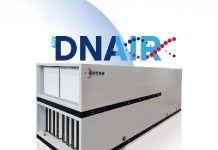A Korean research team has developed a catalyst that transforms carbon dioxide (CO2) into carbon monoxide (CO), a vital building block for sustainable synthetic fuels such as e-fuels and methanol
A research team from the Korea Institute of Energy Research (KIER) has achieved a major technological breakthrough, developing a catalyst that efficiently converts carbon dioxide (CO2) a major greenhouse gas, into carbon monoxide (CO). This carbon monoxide is a vital building block for manufacturing synthetic fuels, such as e-fuels and methanol, marking a significant step toward carbon neutrality and the commercialisation of sustainable energy solutions.
Overcoming high-temperature limitations with copper
The process, known as the reverse water-gas shift (RWGS) reaction, is a crucial technique for utilising captured CO2 as a feedstock. It reacts CO2 with hydrogen (H2) to produce CO and water (H2O). While the reaction typically requires high temperatures—above 800°C—to achieve high CO2 conversion, high heat often causes conventional nickel-based catalysts to degrade. At lower temperatures, common catalysts produce unwanted byproducts like methane, reducing CO productivity.
The KIER team, led by Dr. Kee Young Koo, successfully addressed these challenges by developing a cost-effective, abundant copper-based catalyst.
Novel structure and superior performance
The newly developed catalyst is a copper–magnesium–iron mixed oxide featuring a layered double hydroxide (LDH) structure. This innovative design incorporates iron and magnesium to fill the spaces between copper particles, effectively preventing particle agglomeration and significantly enhancing the catalyst’s thermal stability at lower operating temperatures. This structural stability is key, as copper-based catalysts can selectively produce only carbon monoxide at temperatures below 400 °C, avoiding methane formation.
Through real-time analysis, the researchers found that their catalyst bypasses the normal step of forming intermediate compounds. Instead, it directly converts CO2 into CO on the catalyst surface, which is why it maintains its high activity even at the relatively low temperature of 400 °C.
The performance metrics of the new catalyst are groundbreaking. It demonstrated a carbon monoxide formation rate of 223.7 micromoles per gram of catalyst per second (μmol·gcat⁻¹·s⁻¹), operating stably for over 100 hours. This represents a performance increase of over 1.7-fold in formation rate and 1.5-fold in yield compared to commercial copper catalysts. Moreover, it outperformed noble metal catalysts like platinum by a factor of 2.2 in formation rate and 1.8 in yield, establishing it as one of the world’s best-performing catalysts for this reaction.
Synthetic fuels: A step closer to sustainable e-fuels
Dr. Koo hailed the low-temperature CO2 hydrogenation catalyst technology as a “breakthrough achievement” that enables efficient CO production using inexpensive, abundant materials. As CO is an essential precursor for syngas, which in turn is the building block for synthetic fuels like e-fuels for aviation and shipping, this discovery has immense potential for hard-to-decarbonise sectors.
The research findings were published in the high-impact journal Applied Catalysis B: Environmental and Energy, signalling a major advance in the global effort to recycle CO2 and accelerate the transition to sustainable energy.











